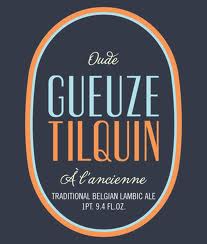 It is hard to believe that less than three years ago, there was not a single (legitimate) Lambic available in Alberta. I can remember thinking at the time that the world of sour beer would never reach our borders. Fast forward to today and not only do we have a long list of Cantillon (in my opinion the best lambics in the world), but we now have a two-handed count of real lambics from other brewers/blenders. How quickly things change.
It is hard to believe that less than three years ago, there was not a single (legitimate) Lambic available in Alberta. I can remember thinking at the time that the world of sour beer would never reach our borders. Fast forward to today and not only do we have a long list of Cantillon (in my opinion the best lambics in the world), but we now have a two-handed count of real lambics from other brewers/blenders. How quickly things change.
One of the latest entrants is Gueuzerie Tilquin, a lambic blender (meaning they don’t brew beer, but purchase lambic from other breweries and blend to create a unique flavour profile). I could espouse a long, family history of lambic, as is common in Belgium, but if I did so I would be lying. Truth be known, Tilquin opened in May of 2011 (although have been aging since 2009), the first lambic company to open in 15 years.
I have learned that they buy their raw lambic from Boon, Cantillon, Girardin, and Lindemans. They are, actually, the only blender that the notoriously protective Cantillon has agreed to sell to. That is a pretty impressive list of brewers, so we know the initial ingredients are the best quality. Which means the rest comes down to the skill of the blender, Pierre Tilquin.
Which then leads to a key question. Are his skills up to it?
One Tilquin beer is now in Alberta (and given its youth, that alone is impressive), their Oude Gueuze Tilquin a l’Ancienne. I can’t tell you what the mix of lambics is, but I assume there is a portion of all four brewers in the beer.
I opened the beer with some anticipation. The beer is a light gold with a bit of haze. It builds a huge white head that finds a way to keep reproducing itself. A moderate amount of lacing lingers behind as it drops (slowly). The aroma is dominated by a clean tartness backed by a bit of grainy malt, some clover honey and a noticeable amount of earthiness.
But the big test is the test. My initial impression, which is stunningly fleeting, is of honey sweetness, some clover and earthy heather. That is quickly blown away by a sharp lactic sourness. The tartness happens on two levels. It starts as a sharpening of the beer, with some clean tartness that seems almost raspberry like. But before you can start to think that it is a fruit beer, it wallops you with the second layer, which is intense, sharp, sour and musty. It makes your tongue curl for a second or two. The linger offers sourness and a ghost of malt sweetness.
As I sip, I know I have a real lambic in my hands. M. Tilquin demonstrates a deft hand with lambic blending. On the whole I find it sharper, more uni-dimensional, and less nuanced than Cantillon (which I recognize is an unfair reference point), but I love its puckering character, which is my main criteria for lambics.
I conclude by offering two thoughts. First, I recognize this is Tilquin’s first (or second) effort. And just like a winery, it is important to recognize that it takes time to develop subtlety. I anticipate their Gueuze four or five years from now. Second, I think enough of this particular Gueuze that I plan to buy a bottle and age it for a few years to see what comes of it.


August 31, 2012 at 11:44 AM
This beer is great, and it’s really awesome that Alberta has all these lambics. I recently drove to Portland with 12 bottles of Cantillon to trade and was able to score some really awesome stuff, one guy told me that I had brought almost as much the city’s last shipment from the distributor! So in that one way, at least, Edmonton’s got Portland beat.
Now we just need some American sours and we’re golden.